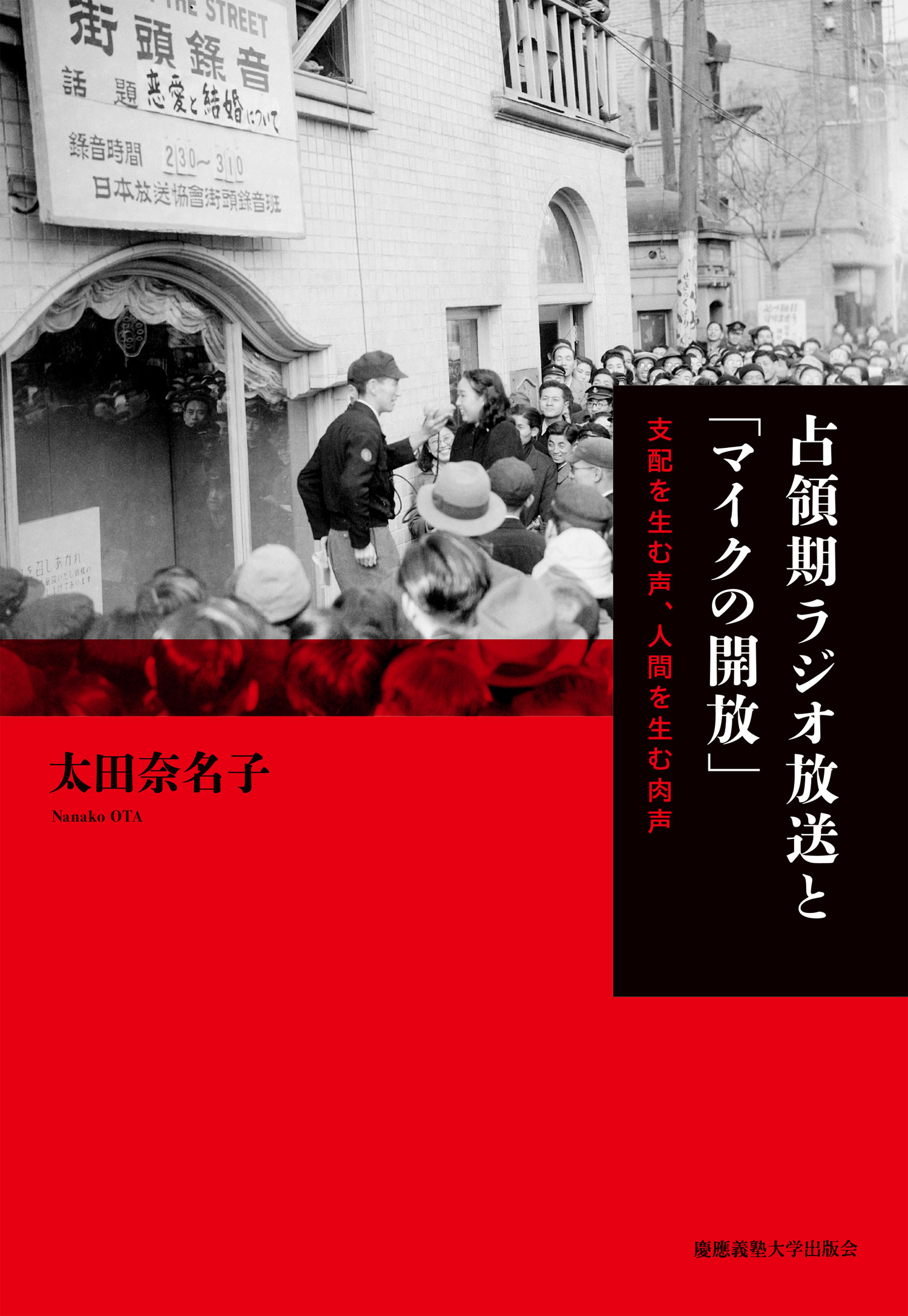
Title
Nihon Senryoki no Radio Housou to Maiku no Kaihou (Japanese radio broadcasting during the US occupation and the “opening of the microphone to the public” - Listening to the controlling voice, discerning the human-becoming voice)
Size
544 pages, A5 format, Hardcover
Language
Japanese
Released
February 28, 2022
ISBN
978-4-7664-2802-5
Published by
Keio University Press
Book Info
See Book Availability at Library
Japanese Page
This book, which is based on the author’s doctoral thesis, is characterized by its interdisciplinary nature, which could not have been achieved if the book had been born anywhere other than Komaba.
I spent seven years during high school and college in the northeastern US. After returning to Japan and reintegrating into society, I could not give up my dream of becoming a scholar and knocked on the door of the Graduate School of Arts and Sciences of the University of Tokyo. Despite majoring in linguistics with the aim of conducting research that would leverage my bilingual skills in Japanese and English, it was not easy to find a research topic to which I wanted to dedicate all of my late 20s.
One day, as I was perusing some literature, I noticed a paper, published by the NHK Broadcasting Culture Research Institute, discussing Japanese radio broadcasting during the US occupation. Before I knew what I was doing, I was on the phone to the institute. I could think of nothing but talking to the author. With the guidance of the author, who I later discovered had preceded me in studying linguistics at the University of Tokyo, I was able to listen to the precious broadcasts from more than seventy years earlier.
After World War II, a variety of reforms were enacted in Japan by the General Headquarters of the Supreme Commander for the Allied Powers (GHQ), and radio broadcasting was not excluded. The top-down wartime broadcasting, such as announcements from the Imperial General Headquarters, was completely revised, and a multitude of programs were introduced that broadcast the voice of the public, through listener contributions and interviews, in order to proclaim “freedom of thought and speech.” Then one day, I finally heard a voice that inspired and even impelled me to dedicate my entire student life to it.
“They are human, you know? It can’t be that they have no hope.”
The owner of the voice was a “sister” who was organizing so-called “panpan” (prostitutes who catered to American soldiers) in Yūrakuchō, where the GHQ was established. The exclamation from the sister upon being asked by an NHK announcer whether the panpan who give themselves up to pleasure had no hope brought tears to my eyes. To understand what my tears meant, I gave a presentation on the topic of this voice in a seminar by Prof. KOBAYASHI Yasuo. Although he had already retired from his position, I was fortunate enough to participate in this seminar in the last year that Prof. Kobayashi taught as a part-time lecturer. Following the presentation, he presented me with a question that would form the research question for my doctoral thesis:
“What will you do about the ‘panpan’ Humanity Declaration?”
It is generally understood that the Humanity Declaration was made by the Emperor Shōwa to renounce his divinity and declare that he was human, not a god in human form. However, this book develops the argument that the Humanity Declaration during the occupation was made by the “sister.” I majored in cultural anthropology in the United States, so I learned linguistics from scratch in Komaba. In addition, to investigate the historical significance of this true Humanity Declaration, I also studied history, media studies, literary studies, and other areas anew. The only reason I was allowed such a liberal academic course was that I was a graduate student in Komaba, which embraces diversity and interdisciplinarity.
In writing this introduction, I was asked to explain the characteristics of my research in a way that would be easy to understand, imagining that the readers would be undergraduate students. The characteristics of my research are already described in this book in simple terms. What I would like to emphasize to undergraduate students, however, is the fact that Komaba, to me, was a place that opened up many encounters and possibilities that I never even dreamed of. If you are worried about what you can learn about and what you can do at the University of Tokyo, please do read this book as an intimate diary of a certain senior student searching for the meaning of her academic life, rather than as a superb academic text.
(Written by: OTA Nanako / June 24, 2022)
Related Info
The 2nd UTokyo Jiritsu Award for Early Career Academics (The University of Tokyo 2021)
https://www.u-tokyo.ac.jp/ja/research/systems-data/n03_kankojosei.html
Related Article:
The Voiceful Voiceless: Rethinking the Inclusion of the Public Voice in Radio Interview Programs in Occupied Japan (Historical Journal of Film, Radio and Television, Volume 39, p. 584-601 2019)
https://www.tandfonline.com/doi/full/10.1080/01439685.2019.1643112?journalCode=chjf20
An Analysis of the Truth Box: Focusing on How the Radio in Occupied Japan Established a Relationship Between the Emperor and the Japanese Public (JOURNAL OF MASS COMMUNICATION STUDIES, Volume 94, p. 93-111 2019)
https://www.jstage.jst.go.jp/article/mscom/94/0/94_93/_article/-char/en/
A book to read while listening to the radio (Keio University Press note March 17, 2022)
https://note.com/keioup/n/n9f5c7caca72f
Media Coverage:
TBS Radio “Ashita no college” (April 8, 2022)
https://youtu.be/5ieNwqjEhbc




 eBook
eBook